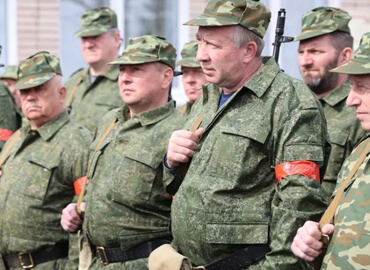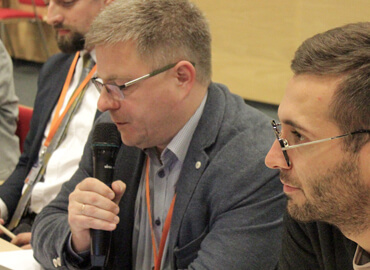Since the constitutional commission created is wholly and completely under the control of Alexander Lukashenko, the constitutional version they are writing up is designed to fully meet his political needs.
Last year, we predicted the transformation of the All-Belarusian People’s Assembly (ABPA) into a new constitutional body that would allow Lukashenko to head it, becoming, conditionally, the chairman of the Presidium of the ABPA – an analogue of the Politburo of the Central Committee of the Communist Party of the Soviet Union.
It seems that in a scenario that would be good for him, Lukashenko expects to receive a new constitutional position and continue to occupy the presidency to transfer it to a loyal person, preferably in the form of dynastic inheritance, in the longer term.
In a more negative scenario, Lukashenko could have awarded the presidential post with truncated powers to a person from his team ahead of schedule (appointing a kind of regent). In this case, the influence of the presidential administration would be curtailed in favor of the Secretariat of the Presidium of the ABPA. This step and other preparations, such as chairmanship as head of the Presidium of the ABPA in the Security Council, even in this scenario, would ensure that he retained the real levers of government.
ABPA as part of the plan, but what else?
In addition to giving the ABPA a constitutional status with broad powers, attention should be paid to other possible initiatives of Lukashenko’s supporters:
- whether provisions will be included that cement an even closer military-political alliance with Russia;
- whether direct presidential elections will be canceled in favor of a formal appointment by parliament;
- whether the need for a nationwide vote on amendments to key sections of the constitution will be eliminated;
- whether the term of office of the president will be increased and whether the age limit for presidential candidates will be reduced.
The last point is especially important, because it is not just a person «close» to him, but a person with close family ties – an heir – who could provide any long-term guarantees for the political legacy of Alexander Lukashenko after his departure. Despite the constant assurances by Alexander Lukashenko that his children are not laying claim to power, it is difficult to believe that he is not thinking about the future of his sons, especially the younger Nikolai.
After only 18 years will he reach the required age limit for the presidency according to the current Constitution (35 years), i.e. after three presidential terms. However, if significant political changes do not take place in the coming year, then in 2022, with the adoption of a new Constitution and the holding of possible early elections (or even without them), a kind of “zeroing out” of presidential terms may occur.
If, at the same time, the age limit for presidential candidates is reduced to 30 years and the duration of the presidential term is increased from 5 to 6-7 years, then the «dynastic transition» after exactly two presidential terms (that is, around 2034) would become theoretically possible. These are the amendments to the constitution (reducing the age limit from 35 to 30) made in 2016 by the leader of Tajikistan Emomali Rahmon as part of the ongoing transition of power favoring his son.
Another potential option to change the age limit at a later stage is to empower the ABPA or another body with the power to amend the Constitution, bypassing a national vote.
In the case of Lukashenko’s chairmanship in the Presidium of the National People’s Council and granting this body broad powers, the question would only be whether, depending on the circumstances, he would entrust at least one of the upcoming presidential terms to a loyal regent (for example, Natalya Kochanova), or whether he would continue to be content with the presidency himself until his son has reached the required age.
Considering the most serious delegitimization of Alexander Lukashenko and all government agencies that took place last year, such a situation sounds farfetched, does it not? But no more farfetched than the assumption, expressed in 1995 or even in 2000, that in 2021 Alexander Lukashenko would still be able to retain power in the country.
Here we leave out of brackets the main problem for the implementation of such long-term political plans – an acute shortage of economic resources. If Belarus were an oil oasis like Bahrain or the United Arab Emirates, then the likelihood of such a scenario would be many times higher, if not close to a foregone conclusion.
On the other hand, considering the growing confrontation between Russia and the West, the importance of Belarus for the Kremlin (hence its support for Lukashenko and its potential willingness to continue to serve as a bottomless (albeit now less generous) well of resources) remains, or even increases. The most important thing will be the result of the hard bargaining between Minsk and Moscow regarding «deep integration» and the format of Belarusian-Russian relations determined by it in the near future.
Different classifications of political regimes
The geographical position of the country and its historical and cultural belonging to European civilization should not be misleading when analyzing the existing type of political regime in Belarus, related in many respects to Central Asian despotism.
Prior to 2020 presidential election, we described in detail the evolution of the political regime in Belarus into a military personalist regime. This definition perfectly reflects the enormous increase in influence of the siloviki in the system of public administration.
When discussing the topic of political transition, it is perhaps more appropriate to refer to the classification of political regimes proposed by political scientists Juan Linz and Alfred Stepan. They described five textbook types of political regimes, one of which they called «sultanism.»
Sultanisms are characterized, among other things, by an extreme degree of patrimonialism and the identification of the country with the fate of the ruler, the meager role of political institutions, and the absence of any clear ideology. In democratic states, officials act in the legal arena within the framework of political institutions established by a constitution. In sultanisms, institutions and rules appear and dance around the ruler and those close to him. It is important to emphasize the dynastic propensities of sultanist regimes, such as the tendency to transfer power by inheritance.
Political scientists Steven Eke and Taras Kuzio, in analyzing the Belarusian political regime, highlighted the prominent elements of sultanism back in 2000. In their article, they rightly noted that the tilt towards sultanism was largely facilitated by the weak national identity of Belarusians.
In his 2012 academic article, the unfortunately deceased Belarusian political scientist Uladzimir Rouda came to the conclusion that by the 2010 elections, according to four parameters out of five (leadership, pluralism, ideology, mobilization, and the human rights situation), the Belarusian political regime is corresponded more closely with sultanism than with a typical authoritarian regime.
The only «lagging» parameter at that time was the sphere of human rights. At that time, the scale of repressions in Belarus was significant, but not as comprehensive as in the case of classical sultanist regimes in the understanding of Linz and Stepan. However, given the scale of repressions in Belarus in 2020-2021, the final stage of evolution into a sultanist regime can be considered completed.
This reference to the Linz-Stepan classification of political regimes is made because their definition of a regime with an inherent monarchical flavor («sultanism») helps the reader to abstract away from formal political institutions and better understand the special importance of dynastic succession for such regimes.
Formally democratic changes
It should be expected that the state propaganda will diligently hide the negative – from the point of view of democracy and law – constitutional reforms behind a series of insignificant, but formally democratic changes. Lukashenko’s bleak intentions and pitfalls of democratic transition are reviewed in our earlier policy paper Constitutional reform in Belarus: imitation and reality.
As an example, it is worth mentioning again Tajikistan, where as many as 40 constitutional amendments were submitted for the 2016 referendum, among which were only a couple of key amendments. The remaining were by and large a formality. Such tendencies are already observed in the work of the Belarusian Constitutional Commission.
Following the results of its second meeting it was announced that citizens who are in temporary detention will likely be given the right to vote. We are talking about several thousand people; that is, less than 0.1% of voters. Moreover, the significance of this formally democratic step is leveled out by the lack of intention to change the existing procedure for the creation of election commissions, to guarantee truly independent observation and openness in counting ballots and tabulating of election results, and so on.
Another example would be depriving labor collectives of the right to nominate candidates for local and parliamentary elections. On the one hand, this decision could be interpreted as progress and a sign of getting rid of the vestige of Soviet times. In reality, given serious restrictions on the registration of political parties, this step will make the selection of names on ballots exceptionally sterile.
Formally democratic innovations can also be the establishment of the post of a special representative for human rights, trial by jury, a slight increase in the competence of regional authorities, and even the introduction of a semblance of elections for heads of local executive committees, albeit from several candidates approved by higher executive committees in advance. Finally, it is even possible to return to limiting the presidency to two terms if the previous ones are «zeroed out.»
These and other «pleasant little thing» should not divert attention from the really important constitutional games of the sultanist regime and the scenario for turning a democratic transition into a dynastic one.
Andrei Yeliseyeu,
expert at the EAST Center and iSANS.
Материал доступен на русском языке: Султанистский режим в Беларуси: власть по наследству как (не)вероятный сценарий










